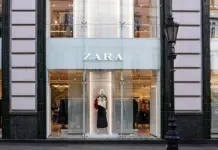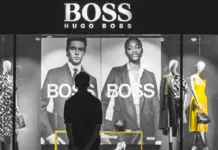A recent study conducted by industry solutions provider Lectra reveals that non-luxury brands are expected to take the lead in the fashion market by 2025, marking the first time in over ten years that this segment will outpace luxury counterparts. This shift points toward a broader transformation in brand strategies, with growth anticipated to be driven more by volume than by value.
Amidst a backdrop of global uncertainty, only 20% of fashion industry leaders foresee improvements in the market this year, according to the findings. Factors contributing to this instability include declining consumer confidence, which has reached its lowest level since the pandemic, decreased discretionary spending, and complex geopolitical issues, such as US tariffs on imported goods.
The data analyzed from Lectra’s AI-driven solution, Retviews, provides insights into how these dynamics are impacting global brands. Antonella Capelli, President of Lectra EMEA, emphasized the importance of strategic flexibility, stating, “Assortment optimisation, increased sell-through (i.e., the percentage of products sold compared to those available), and more accurate market monitoring will be crucial to success, even in such an uncertain environment.”
She continued, “Knowing how to leverage technology to obtain and analyse real-time market insights is therefore essential for adjusting your pricing approach, ensuring alignment with consumer expectations while also meeting business performance and inventory management needs. At Lectra, our mission is to accompany brands along their digital transformation journey, offering them the best tools to make well-informed decisions.”
As luxury brands experience a slowdown and consumers shift away from fast fashion, retail brands are rethinking their strategies. Some are targeting the premium market by recruiting talent to penetrate luxury segments, while others are working to enhance their overall brand image.
The study indicates that mass-market brands like Inditex’s Zara and Fast Retailing’s Uniqlo are broadening their offerings above the €25 mark and scaling back on lower-priced items, signaling a strategic pivot toward higher-value products. Similarly, US brands are adjusting their pricing strategies, introducing more products in higher price brackets to align with evolving consumer expectations.
Despite these strategic shifts, consumers remain cost-conscious, underscoring the need for ongoing market trend analysis to fine-tune pricing strategies effectively.
Pricing Dynamics: Inflation and Tariffs Impact Non-Luxury Brands
The Retviews data indicates that non-luxury brands in Europe are poised to lead fashion industry growth in 2025, resulting in notable pricing adjustments across various categories. Europe experienced a 7% price increase over the past year, with average prices rising from €38 in 2023 to €42 in 2025. In the US, the average price increased by 3%, from $57 in 2023 to $64 in 2025, with potential future tariffs further complicating pricing dynamics.
In terms of specific products, non-luxury leather goods have seen significant price hikes; bags and wallets/cases experienced increases of 20% and 23%, respectively. Entry-level T-shirts and Ivy League-style polo shirts also faced price rises of 8% and 4%. Conversely, leggings have seen a price decrease of 3%, influenced by the growing popularity of activewear, which has led many mainstream brands to lower prices and streamline their offerings.
Year-Round Discount Trends Influence Retail Strategies
In Europe, the trend of early discounts has accelerated, with over 40% of inventory marked down within a week of January 2025 seasonal sales, compared to previous years. Although discount rates fell short of 2024 levels, they remained stable at around 20% for an extended period.
Brands like Uniqlo adopt a strategy of consistent low pricing throughout the year to maintain their image as essential basics providers. In contrast, Zara and Mango leverage traditional seasonal sales, attracting consumers who often wait for discount events before making purchases.
Overall, the fashion industry is navigating a complex landscape, marked by shifting consumer preferences, evolving market strategies, and the ongoing challenge of economic pressures.


































